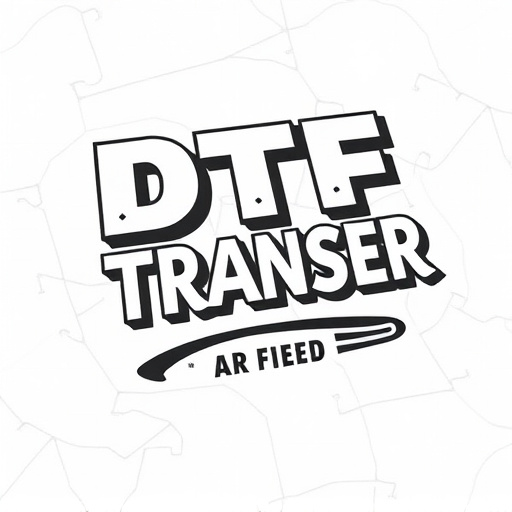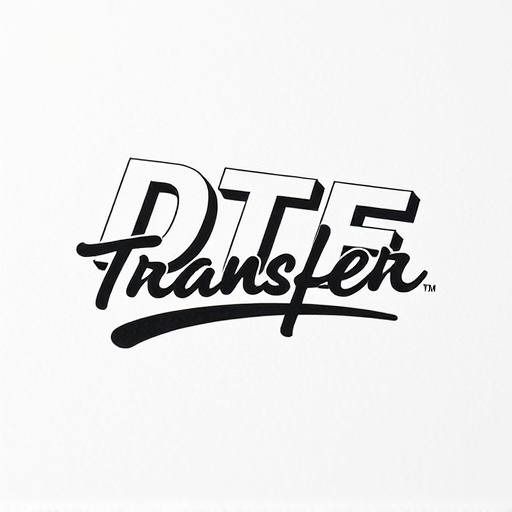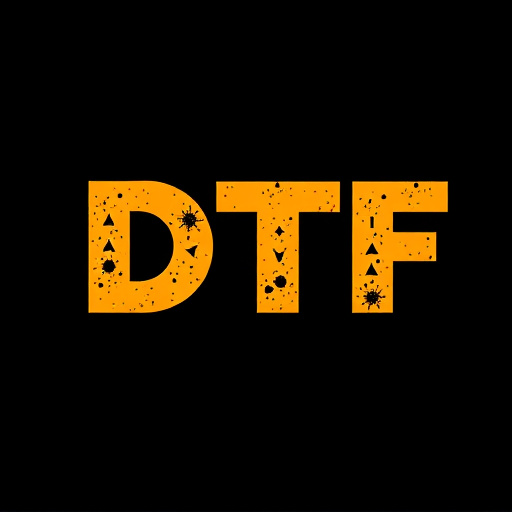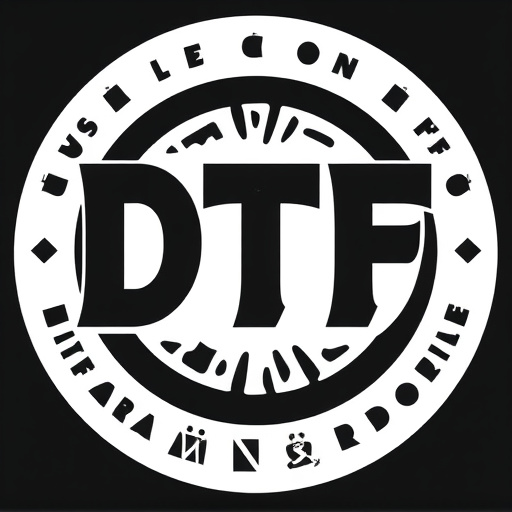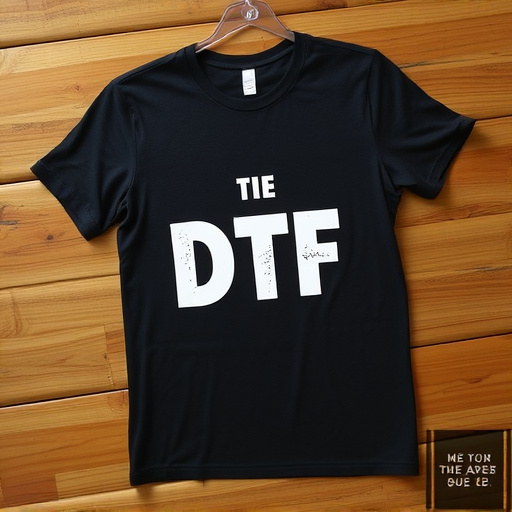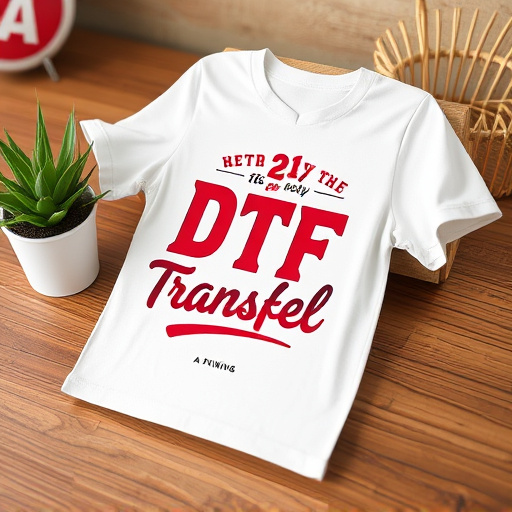Direct-to-Film (DTF) transfers offer high-quality, durable printing on diverse surfaces like metal, plastic, and glass. Specialized printers and inks provide vibrant colors, exceptional clarity, and resistance to fading, making DTF ideal for outdoor signage and demanding applications. Top suppliers like X and Y excel in quality, innovation, and sustainability, offering a comprehensive range of DTF materials suitable for various printing needs. When selecting DTF products, prioritize high-quality prints with excellent opacity, color accuracy, durability, and ease of application. Reputable suppliers employ robust QA processes to ensure top-tier quality. DTF printing's versatility across sectors, coupled with continuous innovations, promises a bright future with higher print quality, efficiency, and accessibilty.
“In the realm of print technology, Direct-to-Film (DTF) transfers have emerged as a game-changer. This innovative process allows for precise and vibrant imaging on various substrates, opening doors to diverse industries from apparel to signage. With the demand for premium DTF prints growing, understanding reliable sources becomes paramount.
This article delves into the world of DTF transfer products, guiding you through top suppliers, essential features, quality checks, and industry applications. Uncover the future trends shaping this dynamic technology.”
- Understanding Direct-to-Film (DTF) Transfers: A Brief Overview
- Top Suppliers and Manufacturers for DTF Transfer Products
- Key Features to Consider When Choosing DTF Prints
- Quality Assurance and Testing for Premium DTF Transfers
- Integration of DTF Printing in Various Industries
- Future Trends and Innovations in DTF Transfer Technology
Understanding Direct-to-Film (DTF) Transfers: A Brief Overview

Direct-to-Film (DTF) Transfers are a cutting-edge technology that allows for the creation of high-quality prints directly on various film surfaces, such as metal, plastic, and even glass. This innovative process involves using specialized printers and inks to produce durable, vibrant, and long-lasting images without the need for intermediate substrates or complicated setups. DTF Printing offers a game-changing approach to signage, advertising, and decorative applications by enabling the production of custom, on-demand prints that rival traditional printing methods in terms of clarity and durability.
By eliminating the need for intricate lamination or coating processes, DTF Transfers boast exceptional color accuracy and resistance to fading, making them an ideal choice for outdoor signage, vehicle wraps, and other demanding environments. The direct application of ink onto the desired film surface ensures a seamless finish, free from bubbles or wrinkles commonly associated with traditional printing techniques. As a result, DTF Prints have become increasingly popular among businesses and individuals seeking high-impact visual solutions without breaking the bank.
Top Suppliers and Manufacturers for DTF Transfer Products
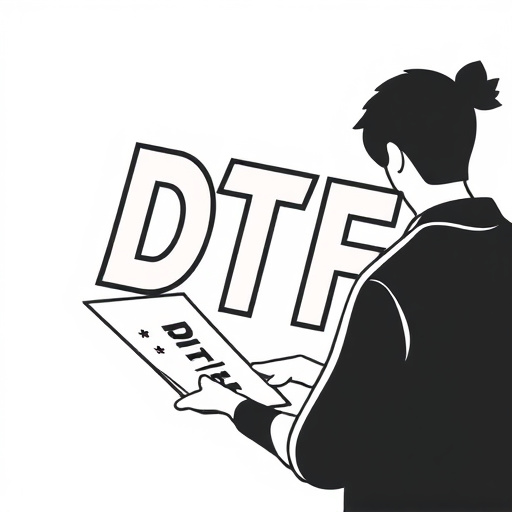
In the realm of direct-to-film (DTF) transfer products, several top suppliers and manufacturers stand out for their quality, innovation, and reliability. These industry leaders offer a wide array of DTF transfer materials, including high-performance inks, substrates, and application systems tailored to meet diverse printing needs. For businesses seeking premium DTF prints, brands like X and Y are renowned for their advanced technologies and consistent output, ensuring vibrant colors and precise details in every DTF print.
When it comes to DTF transfer, these top manufacturers prioritize environmental sustainability, offering eco-friendly alternatives without compromising performance. Their products are designed to streamline the printing process, enhance productivity, and deliver exceptional results. Whether for signage, apparel, or promotional items, their extensive portfolios cater to both small-scale enthusiasts and large-volume commercial operations, making them go-to choices in the DTF printing space.
Key Features to Consider When Choosing DTF Prints

When selecting DTF (Direct-to-Film) transfer products for printing, several key features should be at the forefront of your consideration. Firstly, the quality of the DTF itself is paramount; look for materials that offer exceptional opacity and color accuracy to ensure vibrant, detailed prints. The compatibility of the DTF with various substrates is another critical aspect; a versatile product will adapt to different materials, from vinyl to fabric, expanding your creative possibilities.
Durability is also essential, particularly if you plan to use the DTF for outdoor applications or items that will receive frequent handling. Water-resistant and UV-resistant properties safeguard your designs against fading and damage, ensuring longevity. Moreover, ease of application and removal should be considered; user-friendly DTF transfers save time and effort, streamlining your printing process.
Quality Assurance and Testing for Premium DTF Transfers
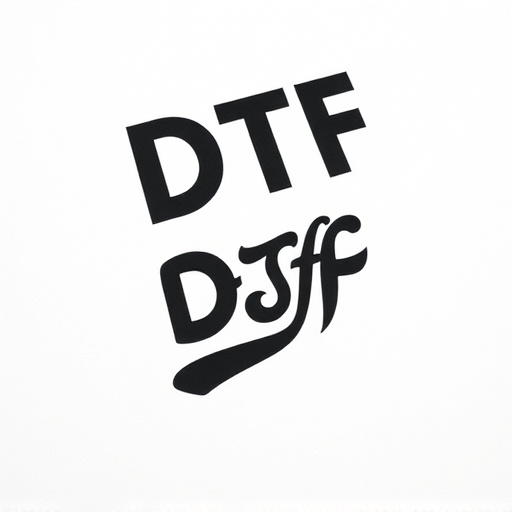
Ensuring top-tier quality for direct-to-film (DTF) transfer products is paramount to delivering exceptional results. Reputable suppliers invest heavily in rigorous Quality Assurance (QA) processes, employing advanced testing techniques to verify every aspect of their DTF prints and transfers. This includes meticulous checks for color accuracy, resolution, and consistency across the entire film surface, ensuring each print adheres to stringent industry standards.
Testing protocols often involve utilizing specialized equipment and software designed to detect even the subtlest variations in DTF transfer quality. These tests encompass durability assessments, where prints are subjected to various environmental conditions, including temperature extremes and humidity, to gauge their longevity. Additionally, visual inspections by skilled technicians play a crucial role, enhancing consistency and ensuring each DTF transfer meets the highest aesthetic expectations.
Integration of DTF Printing in Various Industries

Direct-to-film (DTF) printing has seamlessly integrated itself into diverse industries, revolutionizing the way businesses create and utilize promotional materials. From apparel and accessories to signage and decor, DTF Transfer technology offers unparalleled versatility in design possibilities. Its ability to produce high-quality, vibrant prints directly onto various substrates makes it a game-changer for custom product branding and marketing campaigns.
In the fashion industry, for instance, DTF Printing enables the creation of unique, limited-edition garments with intricate designs. Accessories like phone cases, backpacks, and watch bands also benefit from this technology, allowing businesses to offer personalized, on-trend items. Moreover, DTF Transfer is a preferred method in the signage sector, where it’s used for crafting eye-catching banners, posters, and window graphics. This integration showcases how DTF Printing caters to the diverse needs of various sectors, making it a premium choice for direct-to-film applications.
Future Trends and Innovations in DTF Transfer Technology

The future of Direct-to-Film (DTF) transfer technology looks bright, with continuous innovations pushing the boundaries of what’s possible in print quality and efficiency. As digital printing continues to advance, we can expect DTF to evolve further, offering even higher resolution prints with vibrant colors and exceptional detail. This includes the integration of new ink formulations designed for enhanced durability and water resistance, ensuring that DTF prints withstand the test of time.
Additionally, automation and AI-driven systems are set to streamline the DTF production process. These innovations promise to reduce turnaround times, increase productivity, and minimize human error. Furthermore, advancements in materials science may introduce new substrate options, expanding the versatility of DTF technology across various industries, from fashion and packaging to art reproduction and custom memorabilia. These future trends aim to make DTF printing more accessible, efficient, and versatile than ever before, solidifying its position as a premier method for creating high-quality direct-to-film transfers.


